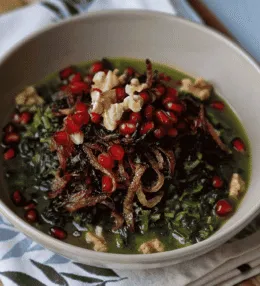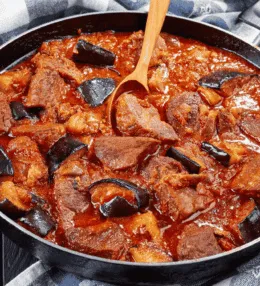
- View
Table of Contents
ToggleFew dishes command the devoted following that tonkotsu ramen enjoys across Japan and beyond. This isn’t just a bowl of noodles in soup. It’s a culinary achievement that requires extraordinary patience and skill to execute properly.
The hallmark of tonkotsu ramen is its thick, milky broth that clings to every strand of noodle. Achieving that distinctive cloudy white appearance and velvety texture demand hours of careful simmering, transforming humble pork bones into liquid gold.
In Fukuoka, the birthplace of this regional speciality, ramen shops operate around the clock, feeding everyone from late night revellers to early morning workers. The aroma of simmering pork bones wafts through entire neighbourhoods, becoming part of the city’s character.
What began as working-class sustenance in southern Japan has evolved into a global phenomenon. Yet despite its international fame, the essence of tonkotsu ramen remains unchanged: rich broth, springy noodles, and a harmony of toppings that together create something deeply satisfying.
Want to dive deeper into Japanese Cuisine? Don’t miss our post on 26 Traditional Japanese Foods to Try
What Is Tonkotsu Ramen?
Tonkotsu ramen centres on a broth made by boiling pork bones at a rolling boil for anywhere from eight to twenty hours. This extended cooking time breaks down collagen and marrow, creating a thick, opaque liquid with an almost creamy consistency.
The name itself tells you everything. “Ton” means pork, whilst “kotsu” refers to bones. Unlike clear broths found in other ramen styles, tonkotsu embraces cloudiness as a badge of honour, proof that bones have released their essence completely.
Thin, straight noodles serve as the traditional accompaniment, chosen specifically because their texture complements the heavy broth without competing against it. The noodles should have a firm bite, cooked just enough to remain slightly chewy.
Toppings vary by shop and personal preference, but certain elements appear consistently. Thin slices of fatty pork belly, soft boiled eggs with jammy yolks, spring onions, wood ear mushrooms, and pickled ginger all play supporting roles.
Many shops offer customisation options that let you control your experience. You might choose your noodle firmness, broth richness, garlic quantity, and oil level. This personalisation reflects ramen culture’s understanding that everyone has their ideal bowl.
Ingredients and Taste
Creating authentic tonkotsu broth requires commitment. Pork bones, particularly leg bones, knuckles, and trotters, form the foundation. These parts contain abundant collagen that transforms into gelatin during prolonged cooking, giving the broth its signature body.
Aromatics like ginger, spring onions, and garlic build flavour complexity without overpowering the pork essence. Some recipes incorporate chicken bones or dried seafood for additional depth, though purists argue this dilutes the true tonkotsu character.
The noodles themselves deserve attention. Fresh ramen noodles made with wheat flour, water, salt, and kansui create the right texture. Kansui, an alkaline mineral water, gives the noodles their distinctive yellow colour and springy bite that holds up in hot broth.
Chashu pork belly gets braised separately in soy sauce, sake, mirin, and sugar until it becomes melt in your mouth tender. The eggs undergo a similar treatment, marinated in a savoury mixture that seasons them throughout whilst keeping the yolks luxuriously soft.
The taste experience begins before you even lift your spoon. The aroma hits first, rich and porky with subtle sweetness underneath. Your first sip of broth coats your mouth with creamy, umami laden liquid that tastes simultaneously light and substantial.
Slurping the noodles brings everything together. The alkaline bite of the noodles contrasts beautifully with the fatty richness of the broth. Each topping contributes something essential: the chashu melts on your tongue, the egg adds silky richness, the spring onions provide freshness.
What distinguishes great tonkotsu from merely good versions is balance. The broth should taste intensely porky without becoming greasy or heavy. It should feel rich but not leave you overwhelmed halfway through your bowl.
A Taste of History
Tonkotsu ramen emerged in Fukuoka during the early 20th century, though pinpointing an exact origin proves difficult. The dish developed organically as street vendors and small shops experimented with making affordable, filling meals for workers and students.
One widely shared account credits a shop called Nankin Senryo in Kurume, Fukuoka, with accidentally creating tonkotsu broth in 1937. According to legend, a cook left bones boiling too long, and the vigorous boil turned the broth cloudy white rather than clear.
Rather than discarding this mistake, they served it anyway. Customers loved the rich, creamy result. Whether entirely accurate or partly mythologised, this story reflects how tonkotsu ramen likely developed through practical experimentation rather than deliberate invention.
Post war Japan saw tonkotsu ramen gain serious momentum. As the country rebuilt, ramen shops proliferated, offering quick, inexpensive, protein rich meals. Tonkotsu’s satisfying richness made it particularly popular among labourers needing substantial food to fuel physically demanding work.
By the 1960s and 1970s, regional ramen styles had become sources of local pride throughout Japan. Fukuoka embraced tonkotsu as its signature contribution to Japanese cuisine. Shops developed their own closely guarded recipes, creating fierce but friendly competition.
The 1980s brought ramen tourism, with enthusiasts travelling specifically to try famous regional styles. Tonkotsu benefited enormously from this trend. Hakata style ramen, Fukuoka’s most famous variant, began spreading to Tokyo and other major cities.
International expansion followed in the 1990s and 2000s. Japanese ramen chains opened overseas locations, introducing tonkotsu to global audiences. What once required a trip to Fukuoka became available in major cities worldwide, though purists still insist nothing compares to the original.
How to Make Tonkotsu Ramen (Pork Bone Broth Noodles)
Tonkotsu Ramen is one of Japan’s most celebrated noodle dishes, known for its rich, creamy pork bone broth and silky noodles. The process is long but deeply rewarding, yielding a bowl layered with umami and warmth. Expect a slow simmered broth, tender chashu pork, and fragrant toppings that capture the essence of Hakata style ramen. See the recipe card at the bottom for printable directions
Ingredients
For the Broth
- 2 kg pork bones (neck and leg bones preferred)
- 1 onion, halved
- 1 garlic bulb, halved horizontally
- 1 small piece of ginger (5 cm), sliced
- 1 leek, roughly chopped
- Water, enough to cover (approximately 5 litres)
For the Tare (Seasoning Sauce)
- 100 ml soy sauce
- 50 ml mirin
- 50 ml sake
- 1 tbsp sugar
For the Chashu Pork
- 500 g pork belly (rolled and tied with string)
- 100 ml soy sauce
- 100 ml sake
- 50 ml mirin
- 2 tbsp sugar
- 2 cloves garlic, crushed
- 1 small piece ginger, sliced
For Serving
- 4 portions fresh ramen noodles
- 4 soft boiled eggs (ajitsuke tamago)
- 2 spring onions, finely sliced
- 1 sheet nori, cut into quarters
- Toasted sesame seeds (optional)
Cooking Instructions
Step 1: Prepare the pork bones
To begin, rinse the pork bones thoroughly under cold water, then place them in a large pot. Cover with water and bring to a rapid boil for 10 minutes. This removes impurities and ensures a cleaner broth. Drain and rinse the bones well before proceeding to the next step.
Step 2: Start the broth
Refill the pot with fresh water and return the cleaned bones. Add the onion, garlic, ginger, and leek. Bring to a boil, then lower to a rolling simmer. Skim off any foam for the first 30 minutes to keep the broth clear.
Step 3: Simmer for depth
Continue to simmer uncovered for 10–12 hours, topping up with hot water as needed to maintain level. The broth should become creamy and opaque, a sign that the collagen and marrow have emulsified properly. Stir occasionally to prevent sticking.
Step 4: Prepare the chashu pork
While the broth cooks, place the rolled pork belly in a saucepan. Add soy sauce, sake, mirin, sugar, garlic, and ginger. Bring to a gentle boil, then reduce to low heat and simmer for 1½ hours, turning the meat occasionally until tender and caramelised. Remove and cool in the liquid before slicing.
Step 5: Make the tare
In a small pan, combine soy sauce, mirin, sake, and sugar. Bring to a simmer for 5 minutes until slightly reduced. This tare forms the seasoning base that balances the richness of the broth.
Step 6: Prepare the eggs
Boil the eggs for 6½ minutes, then cool immediately in iced water. Peel carefully and marinate in some of the chashu liquid for 2–3 hours for added flavour.
Step 7: Strain the broth
Once the broth has reached a rich milky consistency, strain it through a fine sieve to remove solids. Return the liquid to the pot and keep warm. Adjust consistency with water if too thick.
Step 8: Cook the noodles
Bring a pot of water to a rolling boil and cook the ramen noodles according to the packet instructions, usually 1–2 minutes for fresh noodles. Drain and shake off excess water.
Step 9: Assemble the bowls
Add 1–2 tablespoons of tare to each serving bowl. Pour in the hot tonkotsu broth and stir to combine. Add the cooked noodles, then top with slices of chashu pork, halved eggs, spring onions, and nori.
Step 10: Serve and finish
Serve immediately while hot. Sprinkle with sesame seeds if desired. Tonkotsu ramen is best enjoyed fresh, with a side of pickled ginger or a drizzle of chilli oil for a touch of heat.
Variations and Substitutions
- Pork bones substitute: If pork leg bones are unavailable, use a mix of neck bones and trotters for similar richness.
- Tare flavour: Add a small amount of miso paste or dashi for a different depth of umami.
- Noodles: Thin Hakata style ramen noodles are traditional, but medium wheat noodles can also be used.
- Toppings: Add bamboo shoots (menma), bean sprouts, or corn for regional variations.
Cooking Tips for Perfect Tonkotsu Ramen
- Blanching the bones first is essential to achieving a clean, pure broth.
- Maintain a gentle rolling simmer rather than a full boil to extract collagen evenly.
- For an ultra-creamy broth, use a stick blender to emulsify just before serving.
- Prepare the chashu a day ahead to allow the flavours to develop fully.
- Always serve ramen immediately after assembly to preserve the noodle texture.
How to Store and Reheat
Storing Components Separately
Tonkotsu ramen keeps best when you store each element individually. Never leave assembled ramen sitting, as noodles absorb broth and become mushy whilst losing their essential texture. This separation maintains quality far better than storing everything together.
Transfer leftover broth to an airtight container once it has cooled to room temperature. It will keep refrigerated for up to three days. The broth will solidify when cold due to its high gelatin content, which is perfectly normal and indicates proper preparation.
Cooked noodles should be rinsed under cold water immediately to stop the cooking process. Toss them lightly with a small amount of sesame oil to prevent sticking, then store in a sealed container for no more than two days maximum.
Toppings like chashu pork and marinated eggs need their own containers. The pork keeps for about three days refrigerated, whilst eggs should be consumed within two days. Keep any fresh garnishes like spring onions separate in the crisper drawer.
Reheating Your Ramen
Reheating tonkotsu broth requires gentle warmth rather than aggressive heat. Pour the solidified broth into a pot and warm it over medium heat, stirring occasionally. It will return to its liquid state and regain that creamy texture within several minutes.
Avoid boiling the broth vigorously during reheating, as this can break the emulsion and make it separate. You want it hot enough to serve but not bubbling violently. Taste and adjust seasoning if needed, as flavours can mellow during storage.
For noodles, bring a pot of fresh water to boil and drop them in for just 30 seconds to one minute. This refreshes them without overcooking. Drain immediately and transfer straight to your serving bowl to maintain temperature.
Chashu pork can be gently warmed in the hot broth itself or briefly microwaved for 20 to 30 seconds. The eggs taste fine at room temperature, so you can simply remove them from the fridge 15 minutes before serving.

Tonkotsu Ramen (Pork Bone Broth Noodles)
Ingredients
For the Broth
- 2 kg pork bones neck and leg bones preferred
- 1 onion halved
- 1 garlic bulb halved horizontally
- 1 small piece of ginger 5 cm, sliced
- 1 leek roughly chopped
- Water enough to cover (approximately 5 litres)
For the Tare (Seasoning Sauce)
- 100 ml soy sauce
- 50 ml mirin
- 50 ml sake
- 1 tbsp sugar
For the Chashu Pork
- 500 g pork belly rolled and tied with string
- 100 ml soy sauce
- 100 ml sake
- 50 ml mirin
- 2 tbsp sugar
- 2 cloves garlic crushed
- 1 small piece ginger sliced
For Serving
- 4 portions fresh ramen noodles
- 4 soft boiled eggs ajitsuke tamago
- 2 spring onions finely sliced
- 1 sheet nori cut into quarters
- Toasted sesame seeds optional
Instructions
- To begin, rinse the pork bones thoroughly under cold water, then place them in a large pot. Cover with water and bring to a rapid boil for 10 minutes. This removes impurities and ensures a cleaner broth. Drain and rinse the bones well before proceeding to the next step.
- Refill the pot with fresh water and return the cleaned bones. Add the onion, garlic, ginger, and leek. Bring to a boil, then lower to a rolling simmer. Skim off any foam for the first 30 minutes to keep the broth clear.
- Continue to simmer uncovered for 10–12 hours, topping up with hot water as needed to maintain level. The broth should become creamy and opaque, a sign that the collagen and marrow have emulsified properly. Stir occasionally to prevent sticking.
- While the broth cooks, place the rolled pork belly in a saucepan. Add soy sauce, sake, mirin, sugar, garlic, and ginger. Bring to a gentle boil, then reduce to low heat and simmer for 1½ hours, turning the meat occasionally until tender and caramelised. Remove and cool in the liquid before slicing.
- In a small pan, combine soy sauce, mirin, sake, and sugar. Bring to a simmer for 5 minutes until slightly reduced. This tare forms the seasoning base that balances the richness of the broth.
- Boil the eggs for 6½ minutes, then cool immediately in iced water. Peel carefully and marinate in some of the chashu liquid for 2–3 hours for added flavour.
- Once the broth has reached a rich milky consistency, strain it through a fine sieve to remove solids. Return the liquid to the pot and keep warm. Adjust consistency with water if too thick.
- Bring a pot of water to a rolling boil and cook the ramen noodles according to the packet instructions, usually 1–2 minutes for fresh noodles. Drain and shake off excess water.
- Add 1–2 tablespoons of tare to each serving bowl. Pour in the hot tonkotsu broth and stir to combine. Add the cooked noodles, then top with slices of chashu pork, halved eggs, spring onions, and nori.
- Serve immediately while hot. Sprinkle with sesame seeds if desired. Tonkotsu ramen is best enjoyed fresh, with a side of pickled ginger or a drizzle of chilli oil for a touch of heat.
Nutrition
You May Also Like






